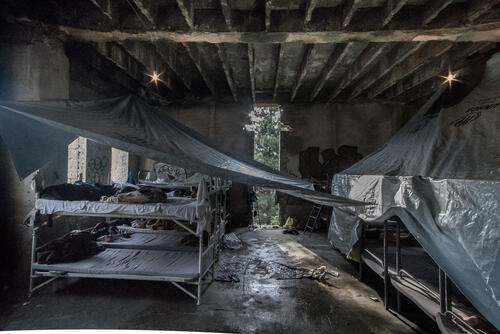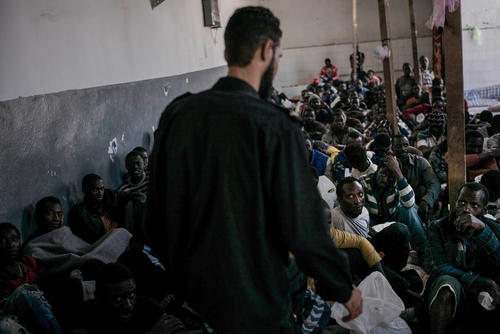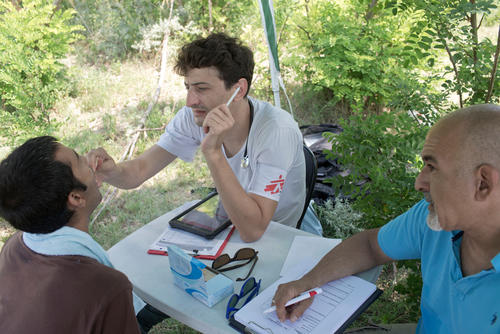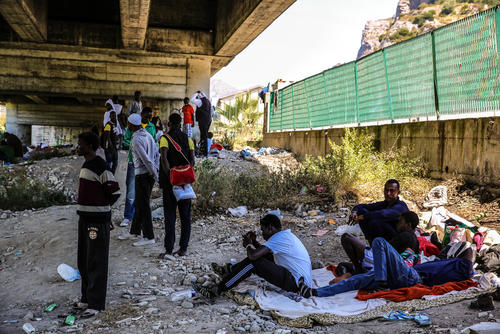In Bosnia and Herzegovina, a crisis is looming if the pace of coordinated humanitarian response does not pick up before temperatures begin to drop.
More than 4,000 migrants and refugees are currently sheltering in informal camps and squats along Bosnia’s border with Croatia. This is a new situation for Bosnia, which before this year had not seen significant numbers of people transiting through the country as part of the so-called Balkan route.
Although the stream of people arriving in the country has been rising for months, basic humanitarian conditions in the two largest points of congregation along the border remain alarmingly inadequate.
At the edge of the city of Bihać, around 3,000 people are living in and around a deteriorating concrete structure. With gaping holes for windows and pools of mud and rainwater on the floor, the five-story former dormitory is now packed with people sleeping on blankets, tents erected in hallways, and sheets hung from ceilings in an effort to provide a modicum of privacy. A forested slope behind the building is scattered with yet more tents.
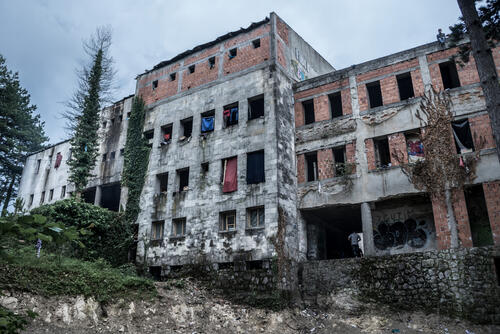
Meanwhile, just outside the nearby town of Velika Kladuša, some 1,000 more people are living in tents and improvised shelters made of tarps and other materials they have found. Trenches are dug around shelters to alleviate flooding from heavy summer storms.
Adults, families and unaccompanied children make up the crowd at both spots. They come from Pakistan, Afghanistan, Syria, Iraq and beyond. Their objective, as for all along the Balkan route, is to flee conflict and poverty in their countries of origin.
A sluggish response
The poor humanitarian conditions in Bosnia and Herzegovina’s transient border settlements are made all the worse by the sluggish and inadequate response to the situation, says Juan Matias Gil, MSF’s head of mission for Serbia and Bosnia and Herzegovina.
“A lack of coordinated planning and reactive preparations in Bosnia and Herzegovina has led to inadequate conditions for migrants and refugees here, thus risking serious harm to their wellbeing, safety and health,” says Gil.
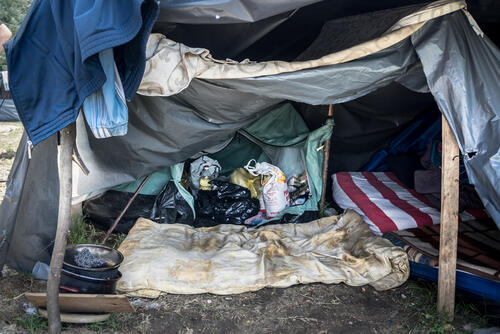
Not only do they not have access to medical services; they also lack basic assistance such as food, shelter, clothes and hygiene services.Matias Gil, MSF’s head of mission for Serbia and Bosnia and Herzegovina
Since June of 2018, MSF has been working steadily on the ground at both of these sites. In cooperation with local medical authorities, MSF operates a small mobile clinic to address the most basic, urgent healthcare needs at each location, as well as to refer more complex yet urgent cases to secondary healthcare in the surrounding Una-Sana canton.
“Winter is approaching, and so far, it has taken months to provide this growing population with the most minimal, basic services,” says Gil. “Winter doesn’t give you time to lose. It could be paid with lives if preparations are not organised in time.”
Previous winters on the Balkan route
Previous winters have seen inhumane and dire conditions for refugees and people on the move along the Balkan route.
In Serbia and along its borders, a collective institutional failure to prepare for winter conditions has left thousands literally in the cold for multiple winters in a row. As EU borders closed ever tighter, thousands found themselves stranded in icy weather, trapped in a country without enough shelter to offer.
During past winters in the region, MSF has treated people for hypothermia and frostbite, and the MSF clinic in Belgrade has seen upticks in respiratory illnesses due to people burning plastics and other materials found for warmth.
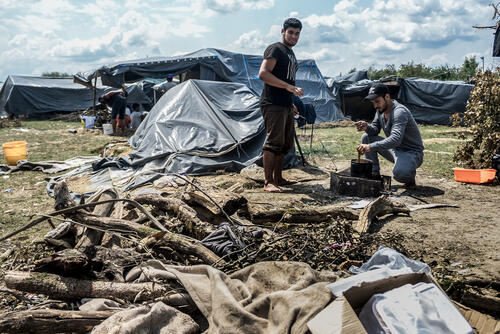
And regardless of the season, violence at the hands of border guards has been regularly reported by migrants and asylum seekers trying to cross Serbia’s northern borders. In the first six months of 2017, MSF’s mobile clinics in Belgrade treated 24 cases of intentional trauma that reportedly took place along the Serbia-Croatia border.
New routes, ongoing concerns
People arriving at – and trying to cross – the Bosnian border with Croatia are coming primarily via camps and informal settlements in Serbia, but some have forged new routes from Greece, through Albania and Montenegro, to arrive here.
People fleeing conflict and instability at home continue to seek security further on in Europe. “These people are stuck in Bosnia and Herzegovina,” says Gil.
In the absence of safe channels to request asylum and international protection, people are forced to continue confronting dangerous journeys and irregular border crossings.Matias Gil, MSF’s head of mission for Serbia and Bosnia and Herzegovina
Moreover, MSF is once again witnessing the disturbing consequences of dangerous border crossings into the EU in the absence of safe alternatives.
“We are also alarmed by the reported push-backs and violence against refugees and migrants on the Croatian side of the border,” says Gil.
“Facing a protracted situation in Bosnia and Herzegovina, we expect migrants will be faced with the same cycle of problematic issues that have plagued other spots along the Balkan route: skin and respiratory diseases, deterioration of mental health conditions, and an increase in violence,” Gil concludes.



